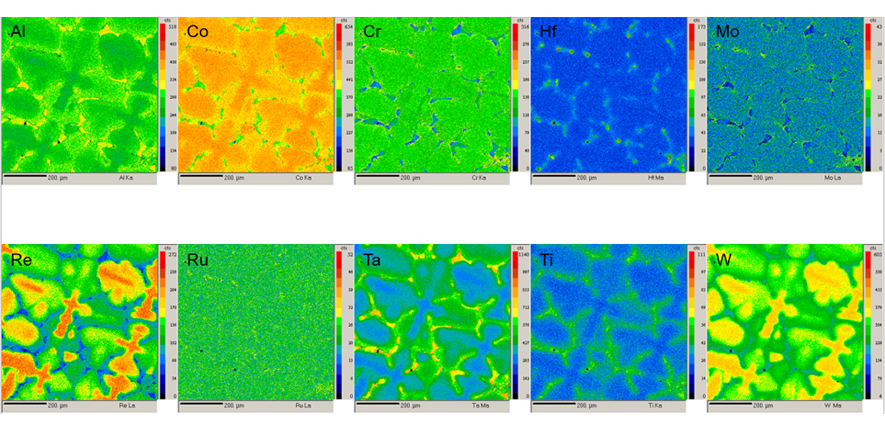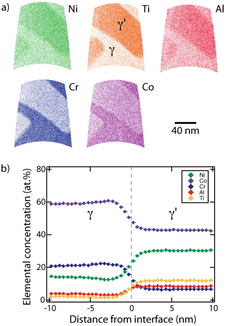
Banner image: Element distributions of as-cast LDSX6-A
Advanced engineering alloys are needed to meet the demanding property requirements of key applications in the aerospace, automotive, marine and nuclear power sectors. By establishing the mechanistic origins of the behaviour of such alloys they may be used to their full potential, providing performance benefits that may be translated into reduced weight, increased efficiency or enhanced service life.
Microstructural optimisation of superalloys
The superalloys that are used in the hottest sections of gas turbine engines are reinforced by distributions of small coherent precipitates. Researchers within the Department are performing fundamental studies of the precipitation characteristics of these alloys to tailor their properties to better suit the needs of the specific applications in which they are used. This work makes use of several advanced characterisation techniques, along with empirical and first principles models, to understand both commercially available and exemplar superalloys.
Design of new Steels
Design problems become interesting when there are multiple solutions. Iron and its alloys are sufficiently complex to offer a domain of solutions, with optimal choices dependent on a combination of selection criteria, including the ability to scale ideas to component level testing and industrial production. Some of the complexity can be ameliorated by the creation and application of computational models, many of which are of generic value, and which reveal new science. The goal therefore is to develop a sufficiently deep understanding of the metallurgy of steels so that new concepts and creative processing can lead to steels suited to extreme engineering.
 Structural functional materials
Structural functional materials
Transforming materials, capable of enhanced performance by reacting to their working conditions through small atomic rearrangements, offer the potential for engineering components that are functional, in addition to structural. These materials could revolutionise engineering concepts, enabling components to reduce emissions, optimise performance and improve safety. Work within the department is focussed on building a fundamental understanding of these complex transformations and elucidating the effect of alloying additions such that application specific alloys may be designed.
Figure caption: Atom probe reconstruction and elemental distribution profiles between phases in an exemplar Ni-Co-based superalloy (www.sciencedirect.com/science/article/pii/S1359645417302604)
